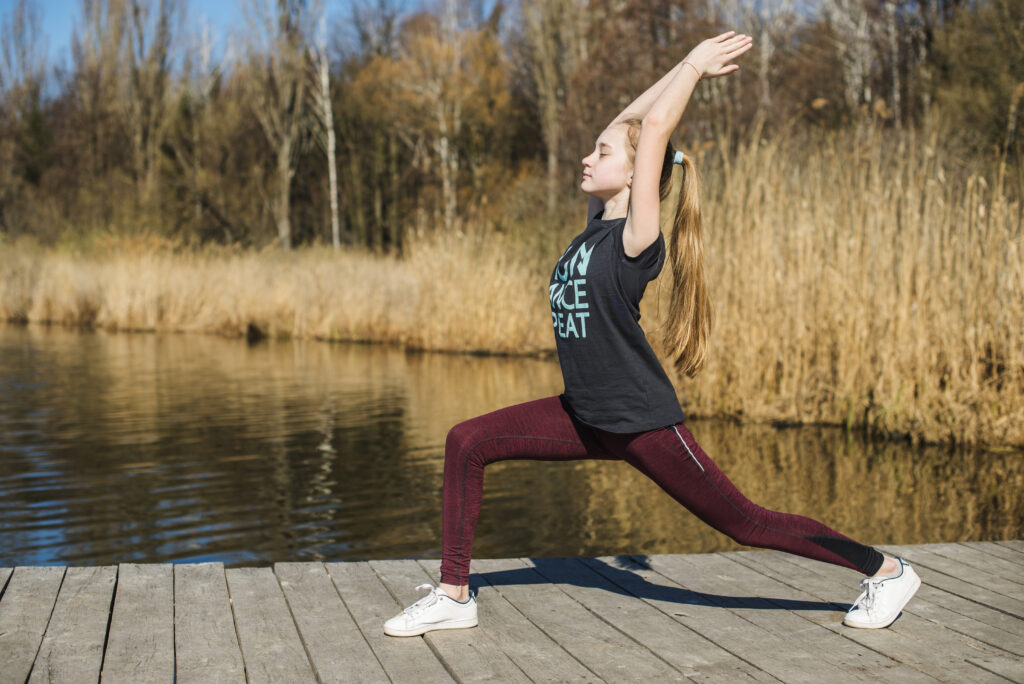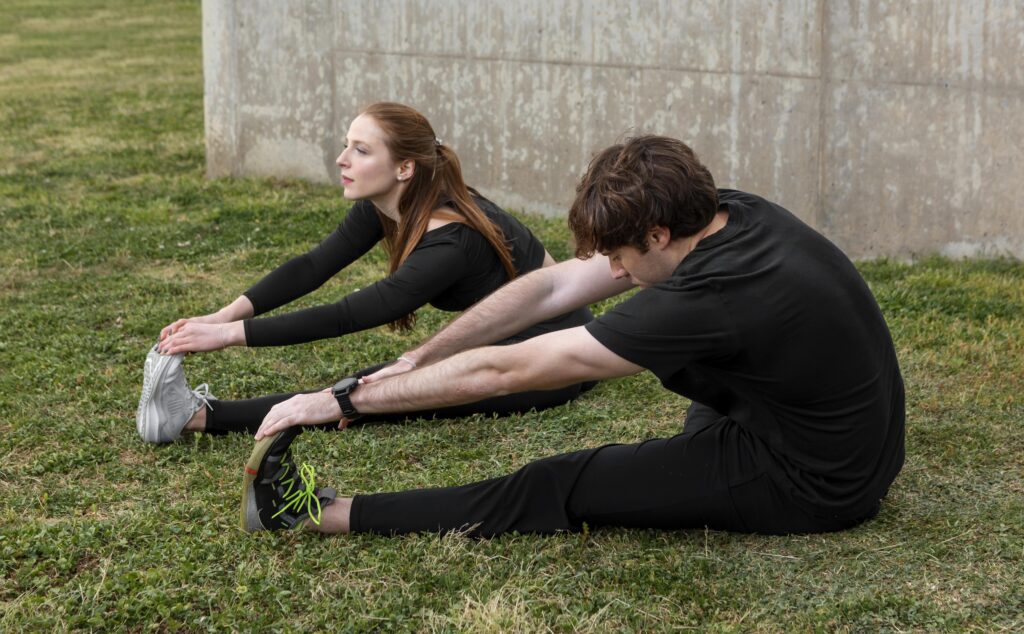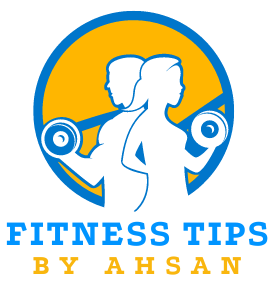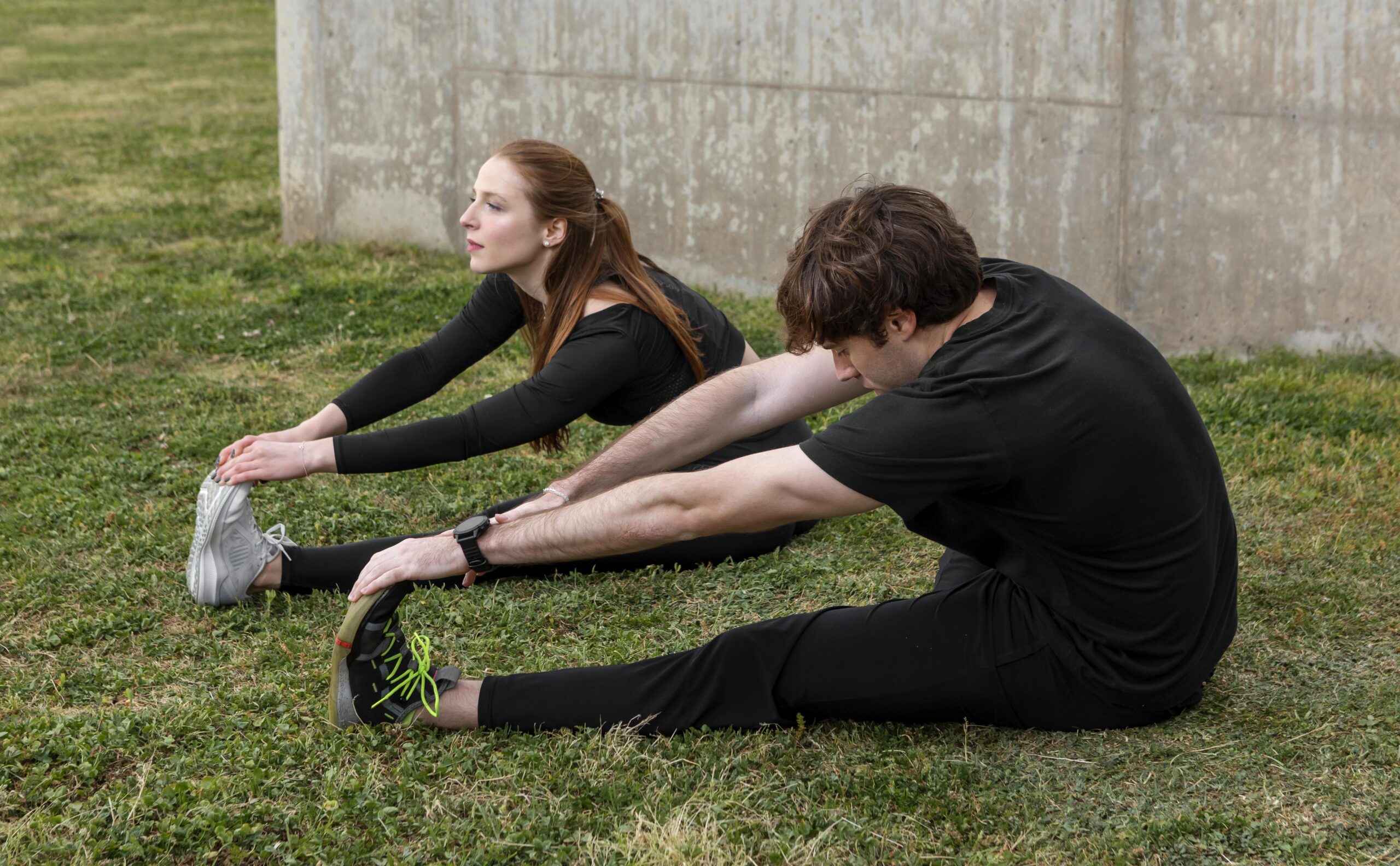Introduction:
1. Basics of Performing the Dead Bug Exercise
The dead bug exercise, despite its simple appearance, requires proper form and technique to maximize its benefits and prevent injury.

Starting Position: Begin by lying flat on your back on an exercise mat. Keep your arms extended straight up toward the ceiling, perpendicular to the floor. Bend your knees at a 90-degree angle, with your shins parallel to the ground. This is your starting position.
Engage Core Muscles: Before initiating any movement, dead beetle exercise engage your core muscles by drawing your navel toward your spine. This action helps stabilize your spine and protects your lower back throughout the exercise.
Lower One Leg and Opposite Arm: Slowly lower your right leg toward the ground while simultaneously lowering your left arm overhead, keeping both limbs hovering just above the floor. Maintain control and ensure your lower back remains in contact with the mat.
Return to Starting Position: With control, return your right leg and left arm to the starting position, bringing them back to their initial positions above you.
Alternate Sides: Repeat the movement on the opposite side, lowering your left leg and right arm while keeping your core engaged and your lower back flat against the mat. Again, return to the starting position with control.
Controlled Breathing: While doing the exercise, dead beetle exercise constantly work on following a deep and relaxed breathing pattern. Draw in as you lower your limbs and as you return to the starting position, edge out. The essential role of breathing is to center your core and boost its control.
2. Dead Bug Exercise Variations and Progressions
While the basic dead Bug Exercise is highly effective for core strengthening, incorporating variations and progressions can add diversity to your workout routine and further challenge your muscles. Here are some variations and progressions to consider:
Ipsilateral Dead Bug: In this variation, instead of lowering opposite limbs simultaneously, you lower the same-side limbs together. For example, simultaneously lower your right arm and right leg while keeping your left arm and left leg stationary. This variation adds an extra challenge to your core stability as you work to maintain balance.
Dead Bug with Added Weight: To increase the intensity of the exercise, you can hold a dumb bell, kettle bell, or weighted medicine ball in your hands while performing the dead bug. The added resistance engages your core muscles even more as you stabilize the weight overhead.
Dead Bug with a Ball: Using an exercise ball adds an element of instability, further engaging your core muscles and challenging your balance. Hold the exercise ball between your hands or feet while performing the dead bug movement, focusing on maintaining control throughout.
Modification: Bent-Leg Dead Bugs: If you’re new to the dead Bug Exercise or have difficulty keeping your legs straight, you can modify by bending your knees slightly. This reduces the leverage and makes it easier to maintain proper form while still targeting your core muscles effectively.
Modification: Bent-Leg Dead Bugs with Arms Flat: Similar to the previous modification, this variation involves keeping your knees bent while also keeping your arms flat on the ground beside you.
3. Understanding the Benefits of Dead Bug Exercise

Core Strength: One of the primary benefits of the dead bug exercise is its ability to target and strengthen the core muscles, including the rectus abdominis, transverse abdominis, obliques, and deep stabilizers. By engaging these muscles in a coordinated manner, you can improve overall core strength and stability, which is essential for posture, balance, and injury prevention.
4. Avoid During Dead Bug Exercise
Although the dead bug technique is an excellent tool to improve abs when performed accurately, sometimes minor errors can nullify the effectiveness and increase the chance of a problem. Observance of the errors leading to their prevention should be prioritized as the student is heading on to squeeze maximum benefits from the exercise.
Arching the Lower Back: Allowing the lower back to arch away from the floor during the dead bug exercise can put excessive strain on the lumbar spine and negate the effectiveness of the exercise. It’s essential to maintain a neutral spine position throughout the movement by engaging the core muscles and pressing the lower back into the mat.
5. Safety Precautions for Dead Bug Exercise
To be safe enough, give the dead bug exercise a shot, but keep in mind that you should watch out that you don’t injure yourself by making necessary adjustments to good form and technique. Furthermore, there are defence measures you can take to have a safe and efficient exercise session. Here are some safety precautions to keep in mind when performing the dead bug exercise:Here are some safety precautions to keep in mind when performing the dead bug exercise:
Consult with a Healthcare Professional: Before starting any new exercise program, especially if you have a pre-existing medical condition or injury, it’s advisable to consult with a healthcare professional or a certified fitness trainer. They can provide personalized guidance and ensure that the dead bug exercise is appropriate for your individual needs and fitness level.
6. Ipsilateral Dead Bug Variation
7. Dead Bug Exercise with Added Weight
Incorporating added weight into the Dead Bug Exercise is an excellent way to increase resistance and further challenge your core muscles. By holding a dumbbell, kettle bell, or weighted medicine ball, you can intensify the exercise and promote greater strength and stability.
Selecting the Right Weight: Start by choosing an appropriate weight that challenges your core muscles without compromising your form. Begin with a lighter weight and gradually increase as you become stronger and more proficient with the exercise.
Starting Position: Lie flat on your back on an exercise mat, with your arms extended straight up toward the ceiling and your legs bent at a 90-degree angle, knees directly over your hips.Dead beetle exercise: hold the weight securely in your hands, positioned directly above your chest.
Engage core muscles: Before initiating any movement, engage your core muscles by drawing your navel toward your spine. This action helps stabilize your spine and protect your lower back throughout the exercise.
Lower One Leg and Opposite Arm: Slowly lower your right leg toward the ground while simultaneously lowering your left arm overhead, keeping both limbs hovering just above the floor. Maintain control and ensure your lower back remains in contact with the mat.
Return to Starting Position: With control, return your right leg and left arm to the starting position, dead beetle exercise bringing them back to their initial positions above you.
Conclusion:
The dead bug exercise is a highly effective and versatile core-strengthening workout that offers a multitude of benefits. By targeting key core muscles, promoting spinal stability, improving coordination, and reducing the risk of injury, the dead bug exercise is an essential addition to any fitness routine.
Whether you’re a beginner or an experienced athlete, the dead bug exercise can be tailored to your individual fitness level and goals, making it accessible and beneficial for virtually anyone. By incorporating the dead bug exercise into your regular workout regimen, you can enjoy a stronger, more stable core. Dead beetle exercise improves overall fitness and enhances performance in everyday activities and sports.











omnis dolor tenetur aut ullam qui aut velit sed officiis laudantium aut dolor. similique ipsa quaerat qui iste aut est explicabo sed eligendi doloribus delectus aut. modi necessitatibus eum facere odi
ea suscipit libero ipsum. exercitationem neque sint iste eius nulla enim dolor quis doloribus minima numquam laboriosam. deserunt vitae eum in fuga quas velit vitae. sit cumque sit sed aut eligendi hi